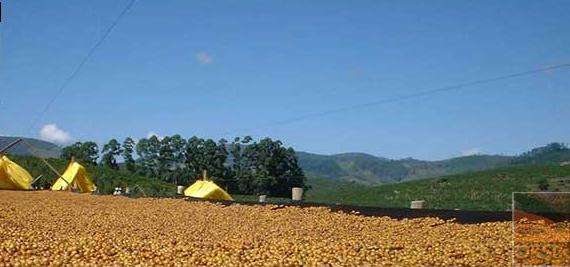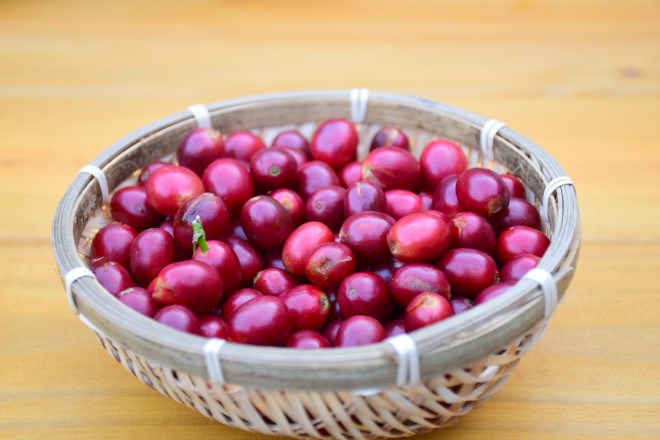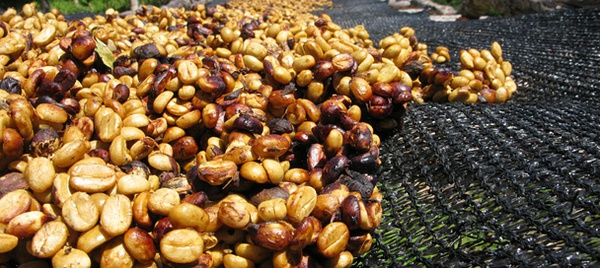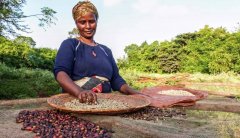Introduction to the flavor and taste of coffee treated with red honey in Centro Manor, Costa Rica
For professional baristas, please follow the coffee workshop (Wechat official account qianjiecoffee)

Country: Costa Rica
Producing area: central Valley Central Valley
Manor: Centro Manor
Producer: Blumas Manor processing Plant
Treatment: red honey treatment
Variety: Kaddura, Kaduai
Altitude: 1300 to 1600 m
Harvest time: November to March of the following year
Flavor: candied fruit, honey, red berry notes, peach, sucrose and flowers, rich in sweet and sour

Brumas del zurqui, which won the National Coffee Competition in Costa Rica in 2006, means "Valley full of clouds". Juan Ramon Alvarado, the owner of the estate, has a degree in agriculture from EARTH University, and his wife Natalia, a fourth-generation coffee farmer, set up the Brumas microprocessor in 2004, producing about 750 bags of coffee a year.
He used the BRIX meter to measure sugar to determine the best harvest time for coffee cherries, and according to Juan Ramon's test results, the best flavor point for sweet and sour balance was when the sugar content reached 15.5%. After the coffee is picked, the peel is removed first, and the pulp scraping machine is used to control the degree of peeling the pulp, retaining a certain degree of sticky pulp layer (mucilage). Then, different from the traditional washing treatment, it does not need fermentation to remove the sticky pulp layer, on the contrary, it is allowed to dry directly with this layer of slime, and then the sticky layer and shell (parchment) are removed directly. Juan Ramon calls the coffee produced by this treatment Honey Coffee, which has low acidity, increased complexity and rich sweet flavor. Through a stable, uniform and careful exposure process, the surrounding residual pectin sugars and alcohols increase sweetness and fuller texture through diffusion, and then dry in a net bed.

The water consumption of this treatment is only 5% of that of the traditional washing plant, and it can be made without a huge washing tank and exposure square. The display of flavor depends on the degree of retention of the pulp, challenging the careful skill and courage of the treater. although in the process of treatment, there will be too much drying failure and mildew, uneven exposure or too rapid overfermentation. But this new treatment has become popular in Central America in recent years and has shone brilliantly in all kinds of coffee competitions.
Important Notice :
前街咖啡 FrontStreet Coffee has moved to new addredd:
FrontStreet Coffee Address: 315,Donghua East Road,GuangZhou
Tel:020 38364473
- Prev

Tarazu Tangmeo Manor in Costa Rica describes the flavor of honey-treated coffee
For the exchange of professional baristas, please follow the coffee workshop (Wechat official account qianjiecoffee) Product name: Don Mayo Honey Tang Mei'omi treatment (also translated as "Tangmeo Manor") producer: Beneficio Don Mayo Tang Meo treatment Plant production area: Tara bead (Tarrazu) soil: native laterite (Lateritic origin) varieties: Caturra production season
- Next

Introduction to the taste of Sofia washed bourbon at Chateau San Tuareo, Cauca, Colombia
For the exchange of professional baristas, please follow the Coffee Workshop (official Wechat account qianjiecoffee) country: Columbia name: San Tuareo Manor Sofia production area: Cauca Provincial treatment: washing altitude: 1950-2050 m varieties: Bourbon San Tuareo Manor is located in CAUCA, Colombia, located in the alpine volcanic area of 1950-2100 m above sea level.
Related
- Does Rose Summer choose Blue, Green or Red? Detailed explanation of Rose Summer Coffee plots and Classification in Panamanian Jade Manor
- What is the difference between the origin, producing area, processing plant, cooperative and manor of coffee beans?
- How fine does the espresso powder fit? how to grind the espresso?
- Sca coffee roasting degree color card coffee roasting degree 8 roasting color values what do you mean?
- The practice of lattes: how to make lattes at home
- Introduction to Indonesian Fine Coffee beans-- Java Coffee producing area of Indonesian Arabica Coffee
- How much will the flavor of light and medium roasted rose summer be expressed? What baking level is rose summer suitable for?
- Introduction to the characteristics of washing, sun-drying or wet-planing coffee commonly used in Mantenin, Indonesia
- Price characteristics of Arabica Coffee Bean Starbucks introduction to Manning Coffee Bean Taste producing area Variety Manor
- What is the authentic Yega flavor? What are the flavor characteristics of the really excellent Yejasuffi coffee beans?

